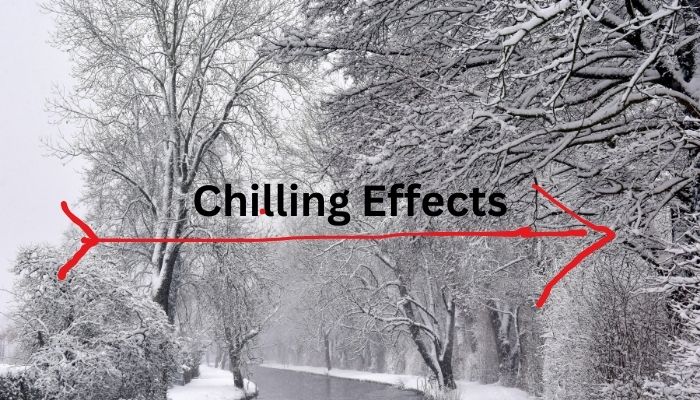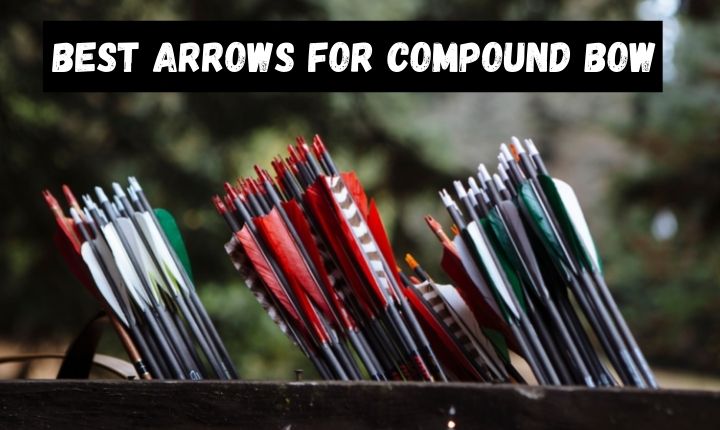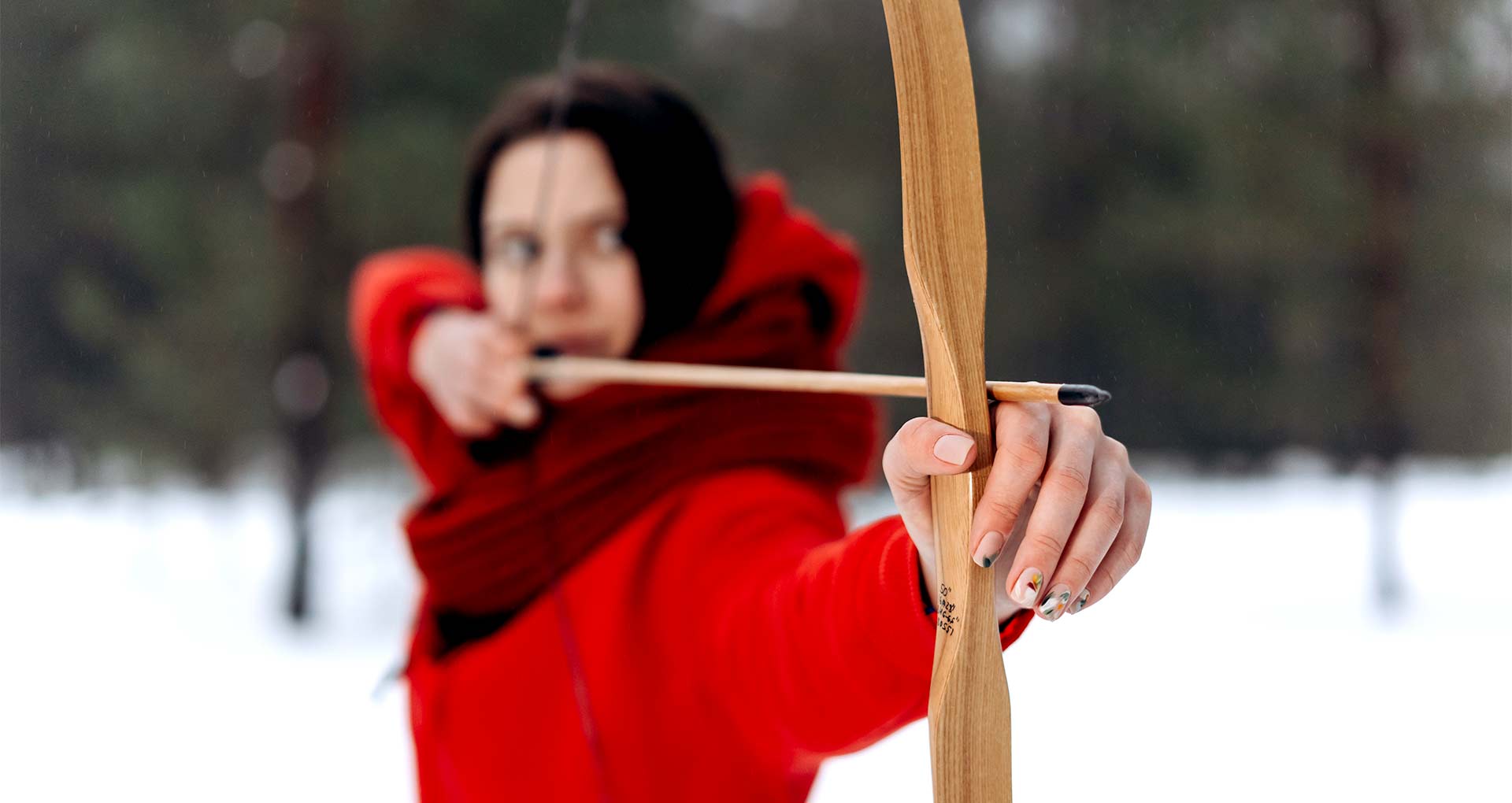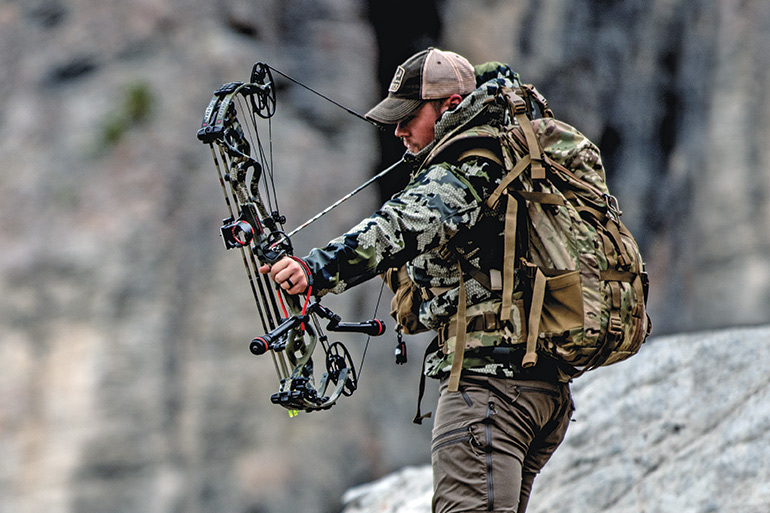Most often an archer always wants to know about the trajectory of the arrow in cold weather.
Here is a simple answer –
Yes, cold weather can affect arrow flight. When the temperature drops, the air becomes denser, which increases the drag on the arrow and can cause it to slow down. Changes in temperature can also impact the stiffness and stability of the arrow shaft, as well as the shooter’s ability to aim accurately.
Cold weather can have a significant impact on arrow flight, which is important to consider for any archer looking to maintain their accuracy in these conditions.
It is crucial to understand how cold weather affects arrow flight in order to properly adjust your techniques and equipment.
In this article, we will explore the various ways in which cold weather can affect arrow flight and discuss strategies for improving accuracy in these conditions.
How Cold Weather Affects Arrow Flight:
There are several ways in which cold weather can impact the flight of an arrow.
The density of the Air:
The density of the air can have a significant effect especially true in cold weather. As the temperature drops, the density of the air increases, which can cause the arrow to slow down and lose some of its kinetic energy. This can result in a decrease in accuracy and distance.
By this time a simple scientific velocity motion will impact and thus it creates low movement toward the cold weather.
The relationship between cold weather and arrow speed can be shown as
Arrow Speed = 1/ Cold Weather
Changes in air temperature between winter and summer, ranging from 5 °C to 32 °C (41 °F to 90 °F), can cause a significant change in air density, up to 10%.
This change in density can affect the flight of arrows, leading to increased drag and a decrease in speed, as well as changes in the stability and stiffness of the arrow shaft.
Impact on the Flexibility of the Arrow:
Cold weather can also affect the flexibility of the arrow.
As the temperature drops, the arrow may become more rigid, which can cause it to lose some of its kinetic energy and accuracy.
On the other hand, if your arrow becomes too flexible, it may not be able to maintain its proper shape and stability during flight, which can also impact accuracy.
Also Read: Archery Angle Calculator( Compensation )?
Changes in the Release of the Bowstring:
The low temperature makes the bowstring become more rigid and difficult to release smoothly, which can cause the arrow to veer off course.
In some extreme cases, the arrow may slip off or out of your hand maneuvering.
You should use an arm guard or other accessories for better performance in the cold.
Does temperature affect arrow speed?
Yes, the temperature can affect arrow speed. As mentioned earlier, colder air is denser, which can increase drag on the arrow and cause it to slow down.
On the other hand, warmer air is less dense, which can reduce drag and increase arrow speed.
Studies have shown that for every 10-degree Fahrenheit change in temperature, arrow speed can vary by up to 1-2 feet per second.
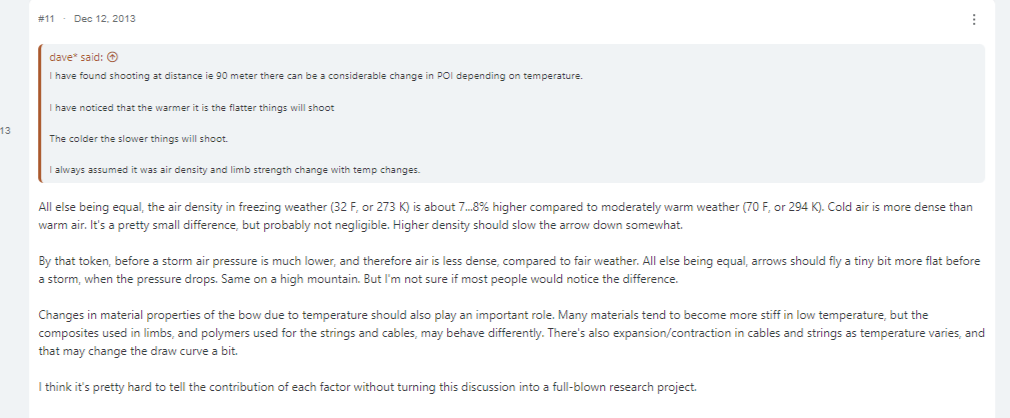
As per the Archerytalk community threads, showing the same opinion as I expressed.
However, some other factors may present for bow shooting inconsistency. You can check that here.
Frequently Asked Question:
What temperature is best for archery practice and hunting?
The ideal temperature for archery practice and hunting can vary depending on several factors, such as the shooter’s comfort level and the type of bow and arrow being used.
However, a temperature range of 65-75 degrees Fahrenheit is generally considered optimal for consistent arrow flight and accuracy.
Can arrow materials perform differently in the cold?
Yes, the built materials of the arrow can perform differently in the cold.
For example, carbon arrows are generally less affected by changes in temperature than aluminum arrows (metals is more tend to reflux and afflux the temperature ), which can become more brittle and prone to breakage in colder weather.
Additionally, wooden arrows can also be affected by cold weather, as changes in temperature and humidity can cause them to warp or split.
Do humidity and wind affect arrow flight in the cold?
Yeah, Higher humidity levels can cause the air to become denser, which can increase drag on the arrow and cause it to slow down.
Additionally, wind can impact the trajectory of the arrow, especially if it is gusty or unpredictable.
In my experience, I will say try to avoid the low temperature and practice more at around 20 degrees centigrade thus it will ease your arrow release and definitive goal shot.
Read: How To Set Up A Recurve Bow? (An 8-Step Guide)
Does indoor vs. outdoor shooting impact arrow flight in the cold?
This is one of the frequently asked questions of the community. In an indoor range, shooters are protected from the wind and other weather elements, which can make it easier to maintain consistent arrow flight.
However, indoor ranges are often climate-controlled, which can affect the density and temperature of the air and potentially impact arrow flight.
Outdoor shooting, on the other hand, can be affected by wind and other weather conditions, but the air density is typically more consistent.
So, if you’re going to start archery then indoors will be best at low-temperature conditions, otherwise, you can go for outdoor and natural environments.
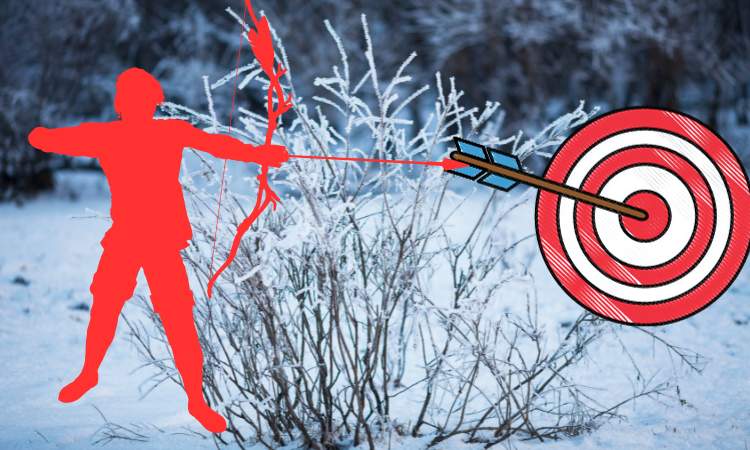
What tips can help maintain optimal arrow performance in cold weather?
To maintain optimal arrow performance in cold weather conditions, consider the following tips:
- Warm up your bow and arrows by bringing them indoors or keeping them close to your body before shooting.
- Use a heavier arrow to compensate for increased drag caused by colder air.
- Avoid exposing your bow and arrows to extreme temperature changes, such as leaving them in a cold car or outside in freezing weather.
- Consider using a bowstring made of a more flexible material to prevent it from becoming too stiff in the cold.
- Take breaks as needed to prevent fatigue and maintain accuracy.
- Inspect your equipment regularly and make any necessary adjustments to ensure optimal performance in cold weather conditions.
Conclusion:
In conclusion, cold weather can affect the flight of arrows due to changes in air density and changes in the arrow’s stiffness and stability.
Shooters can take steps to compensate for these effects, such as using heavier arrows, warming up equipment, and taking breaks to prevent fatigue.
Being aware of these factors can help maintain optimal arrow performance in cold weather conditions.
And always try to keep aside with your instructor to know more details.
Let me know if you need any further assistance.

General Manager & Auditorial Head.
Killian Jake is a World Sports Traveler and hobbyist sports lover. By exploring different sorts of playing modules like indoor, outdoor, and many more. As for professionalism and writing, it’s helpful to give you the right suggestions on different games and sports.

